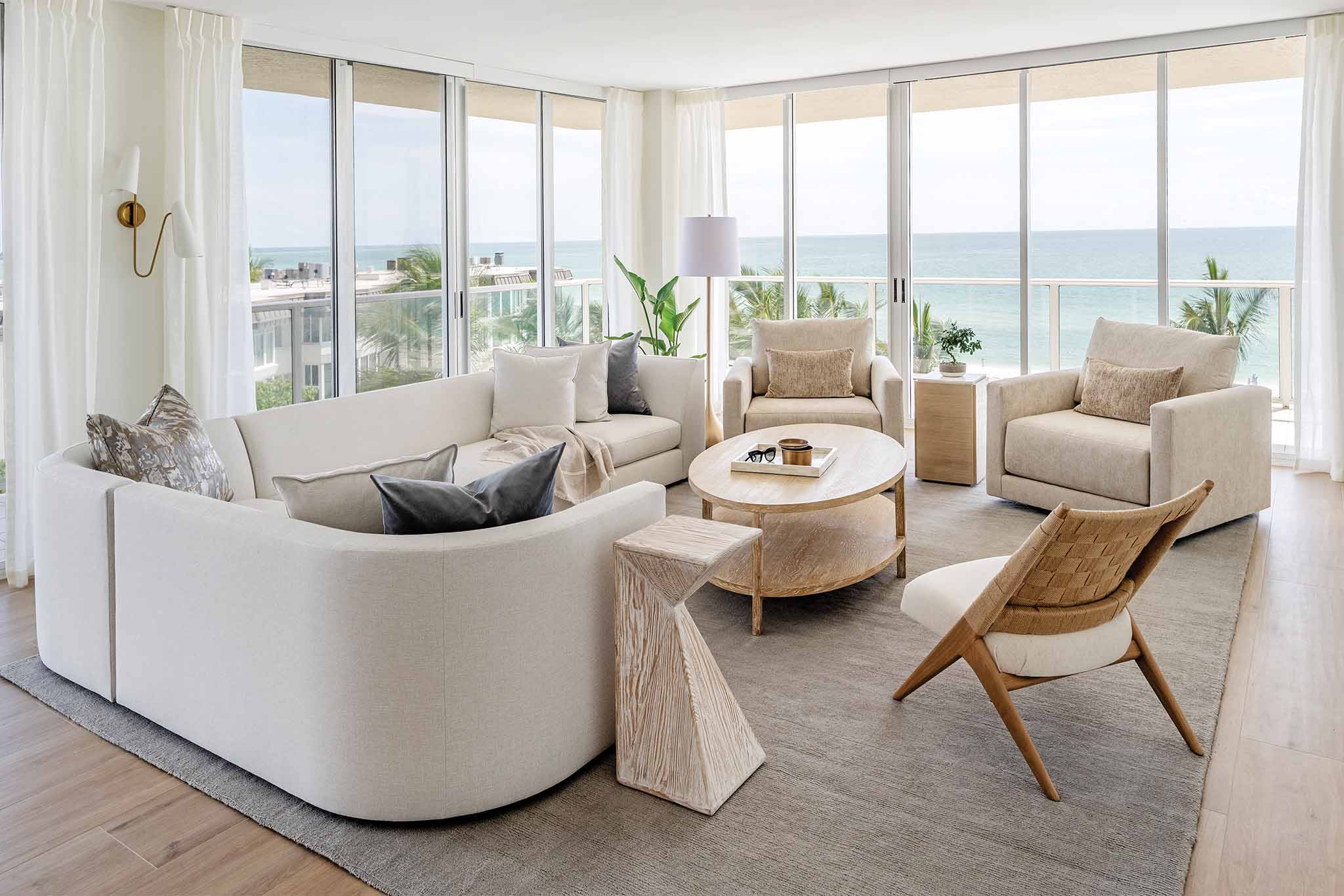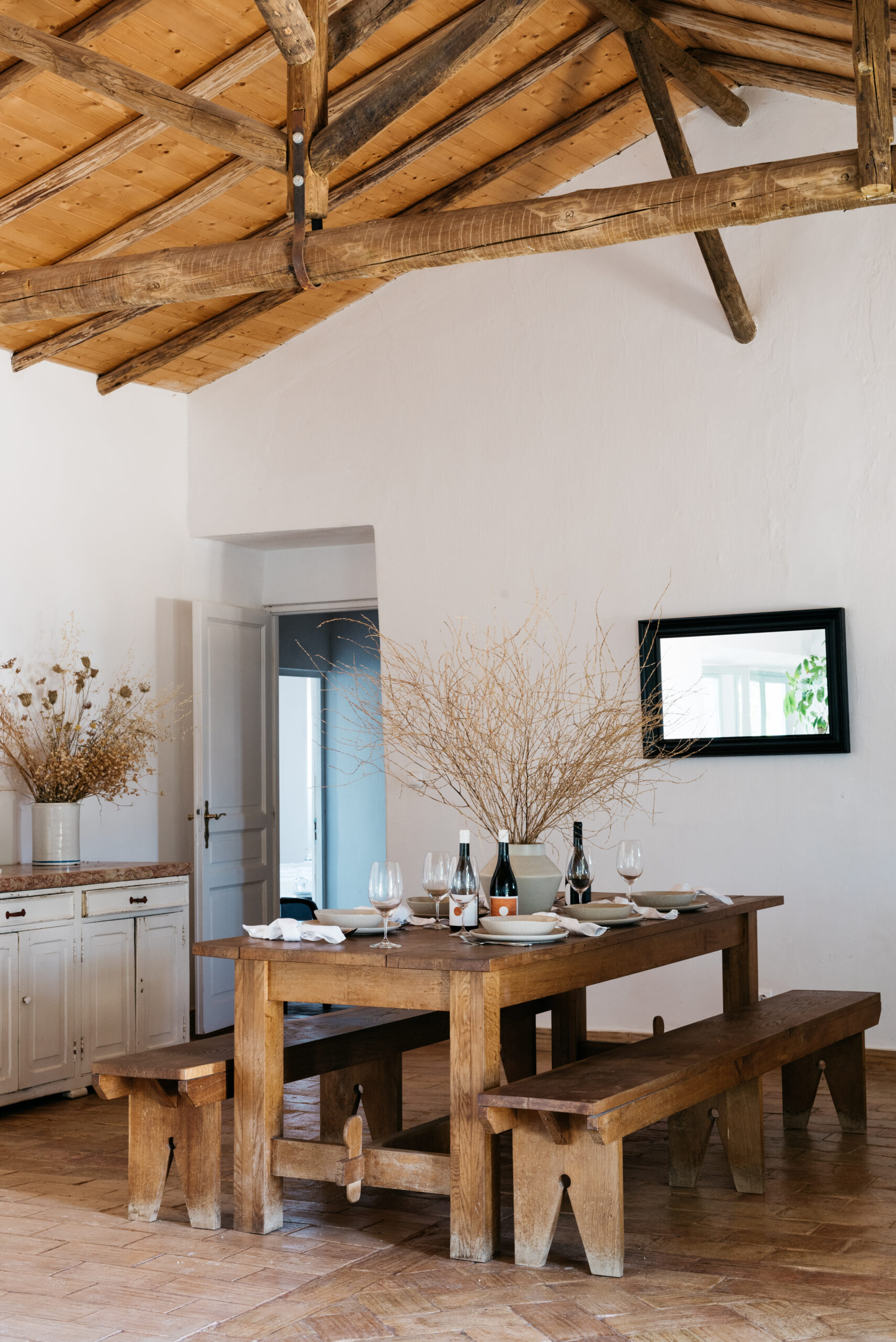Text by Josh Terry
Images by Nicholas Ferris
Natural light is everything. If you live in an oceanside villa with floor-to-ceiling windows or an urban garden unit apartment with limited views, you know how much it matters. Maximizing the sunlight in your home is essential. It can open up the whole space and make you feel better about where you live. More importantly, study after study has shown natural light’s physical and mental health benefits which include everything from improving sleep, Vitamin D storage, your vision, your productivity, and your overall mood. Your daily life needs to let the light in and if you have a vacation home, your beachfront decor should do everything it can to make the sun the center of the space.
Tracee Murphy is the CEO and Principal Designer of the Sarasota, Florida-based interior design firm Trade Mark Interiors and she knows a lot about the health benefits of natural light. After all, her background is just as rooted in psychology as it is in interior design. “I originally started my career in the psychology field and transitioned to design after purchasing my first home,” she says. “After 23 years in business, we are still passionate about design and now incorporate principles of psychology in all of our work. We need to be sure we are creating spaces that speak to how our clients feel. Color is one way we accomplish this.”
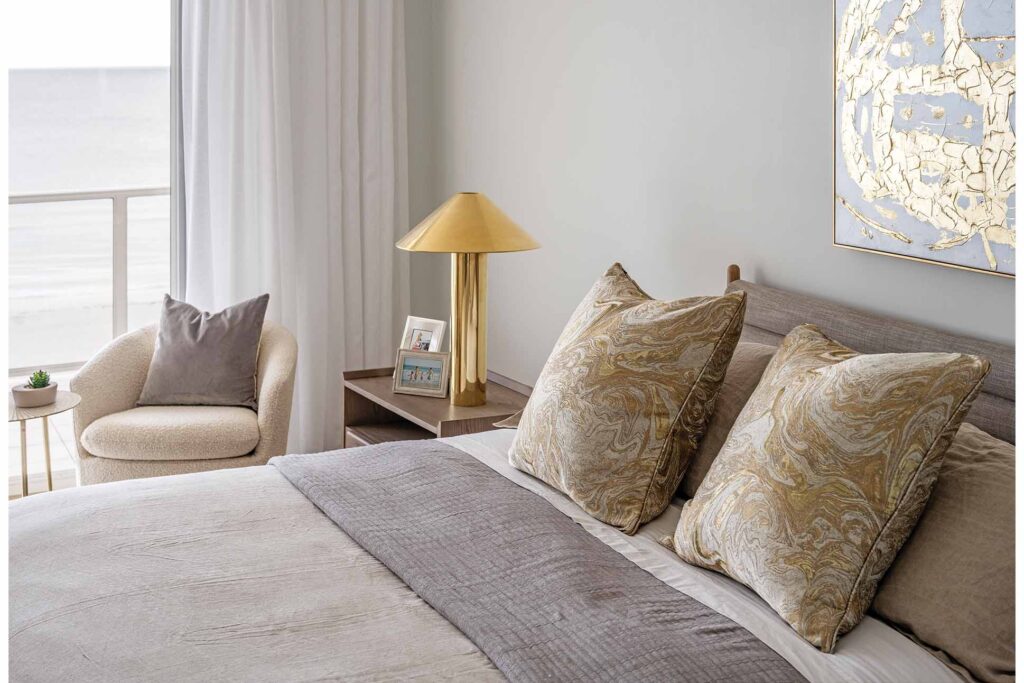
On Trade Mark Interiors’ website, the business offers a download called “The Psychology of Color” that is meant to guide prospective clients through how “Color creates powerful psychological and physical effects.” The digital booklet gives detailed psychological profiles of each color and best practices for utilizing these hues in your home. If you’re thinking of incorporating blue into your space, they write that it’s “Great for bedrooms & bathrooms.” When it comes to beachfront properties, Murphy says color is their main tool for enhancing design in the form of fabrics, paints, and hard materials. “A nice balance of natural light is always the goal,” she says.One way Murphy achieves this balance is by allowing the natural light to dictate how the home is designed and decorated. By focusing on daytime lighting when it comes to color rendering the space, they’ll then select a specific color temperature for artificial lighting to blend the two worlds together. That means the home always feels like natural daylight, but softened for evening settings. This softening can be achieved by controlling harsh or direct light with special window coverings and utilizing timed and automated controls. “Natural light is a dream to work with for many reasons,” she says. “The glow of beachfront light creates dreamy interiors by creating seamless indoor/outdoor living spaces. Bringing the outdoors in is vital on a waterfront home.”


Color is just one facet of incorporating natural light into your beachfront home. According to New York-based designer Jaime Walters, having a sense of place is just as important. Recently Walters was tasked with designing and decorating a vacation home in Sarasota, Florida for one of her regular New York City clients. “Because it is a Florida escape and they’re going to enjoy the beach there, I needed to figure out how to make this beach feeling come inside,” says Walters. “That’s where you get the hues in this property: the taupes, that nice sandy, creamy color, a peachy-shell-like hue, and a clear crystal blue which mimics the ocean, were my core palette.”
A newly-constructed beachside property in Sarasota is a vastly different project than say a rustic, historic home on the East Coast. Your build and your location affect how you should approach the design. “I actually have been working for years now on a barn/guest house on an island in Maine called Vinalhaven,” says Walters. “It’s a very different project even though it is surrounded by water. Maine’s a much cooler climate so we look at denser, warmer textures that play well with rustic woods, which are the focus there.” By keeping your house in harmony with its surroundings, you can use natural light more seamlessly.
Some houses have naturally dramatic lighting: it gets very bright during the day and very dark at night. If this is the case, Walters suggests going with a lighter color palette overall that tends to highlight shadow rather than doing a very saturated color palette with deep reds, deep blues, and deep greens. “The approach I took at the Sarasota project is keeping almost everything in there neutral because when it’s dark in the evenings it’s still somewhat light feeling,” she says. “You still get that nighttime feeling there but when it’s bright then it’s even more reflected on the lighter surfaces.”
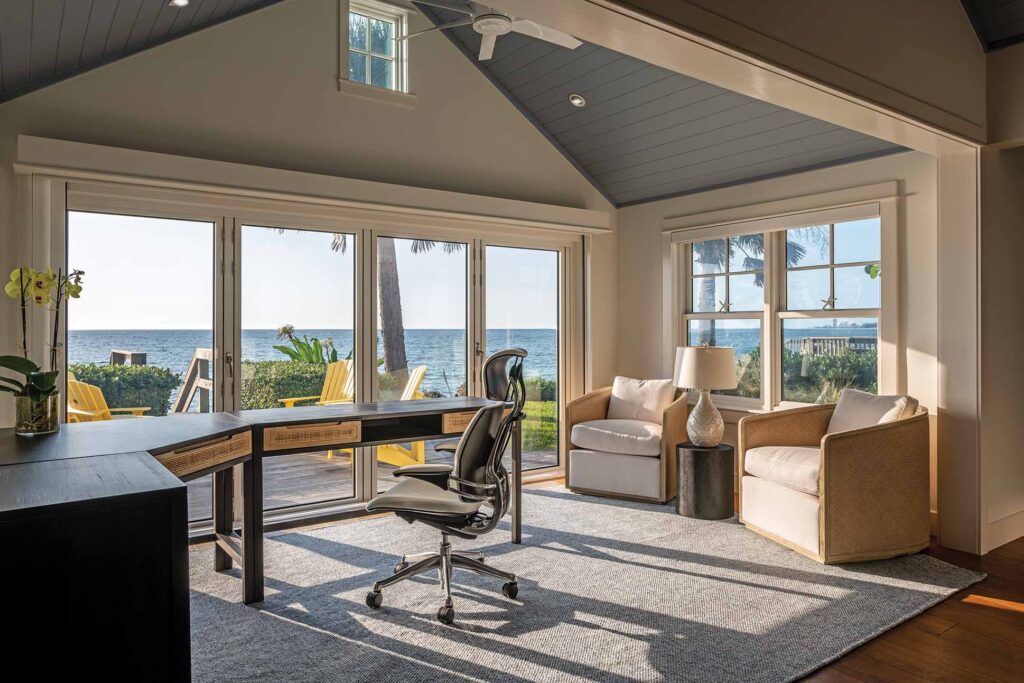
With a neutral approach with a color palette, you can add variety and spice to your space by playing with textures, fabrics, and accents. For Walters’ Sarasota project, she balances a rope-woven chair, which fits with the nautical-adjacent beachfront theme of the property, with velvet side chairs. “It’s all about adding a little bit of variation and texture,” says Walters.
Beyond aesthetic concerns, equally key is practicality. Walters’ clients have kids and plan to use this vacation property to host friends and other families. “When you’re talking about beachfront properties or any place, you need to make sure that the fabrics on the pieces that you really care about are protected,” says Walters. In the Sarasota property, she uses outdoor-grade fabric on indoor sofas and goes for stain-resistant wool rugs over the pricier viscose material. “People should be able to walk through the apartment in wet flip-flops and have the moisture not stain the floor,” says Walters. “They just have to think about materials that you can use. You don’t have to worry about your new place getting messed up.”
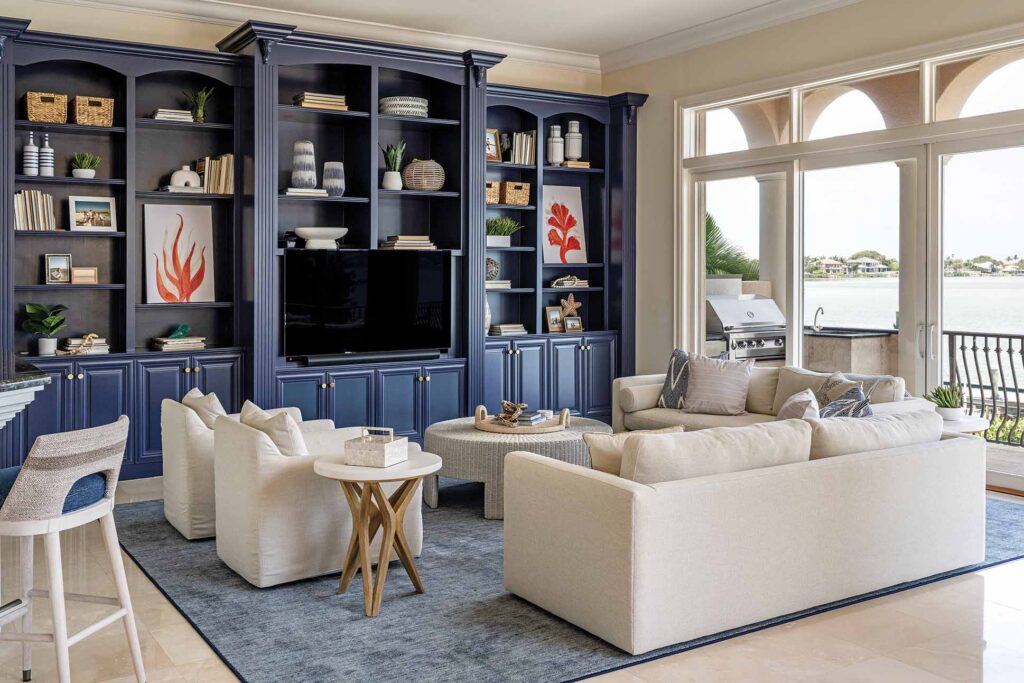
Walters says being an interior designer is acting as a guide and an expert for their clients. They incorporate their own expertise and knowledge of materials, colors, and design with their client’s personal style. ”I am actually not a beachy person but I love going to this beachfront property in Sarasota and I love the serenity of it,” says Walters. “My client’s taste veers a little bit glam on this project so I knew that my metal accents were going to be brass, which is very complementary.” In order to maximize natural light, Walters says, you need to think holistically about your property and ask probing questions about the space. How do you want it to feel? How do you want it to be used? Who is using this space?
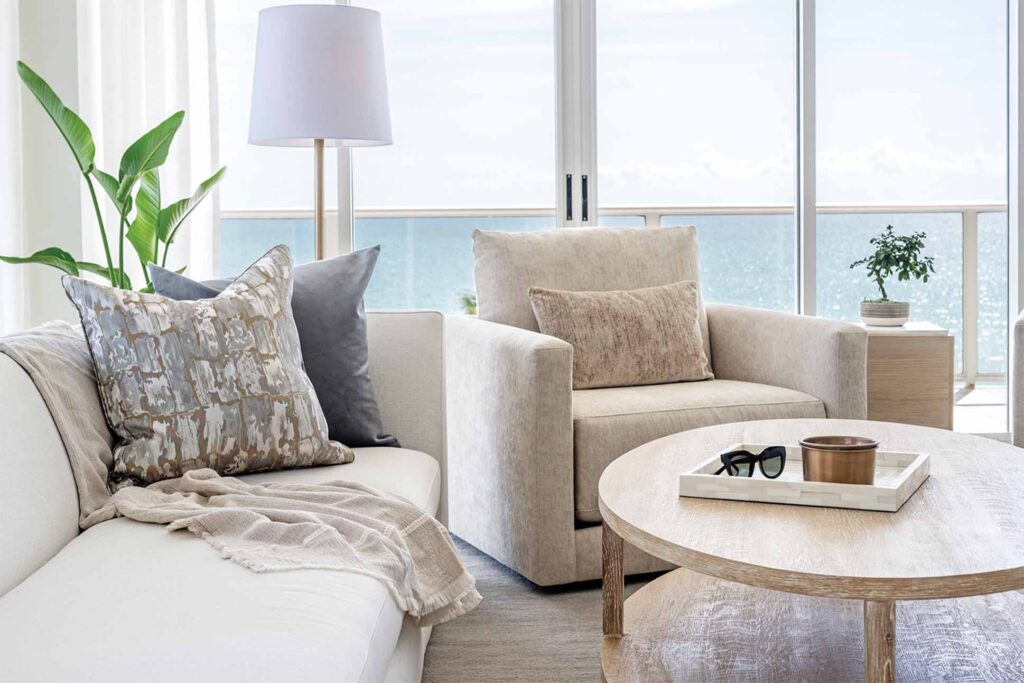
“A great payoff for a client and for me is when they really enjoy their home, and they live in it, and it feels comfortable to them,” says Walters. To her, interior design is a journey and a mutually beneficial relationship between her and her clients. With every project, however, comfort begins with the light. “The lighting is the first thing I notice in anybody’s home,” says Walters. “If a client’s home has excellent, natural light, that’s the first thing I’ll compliment them on.”

